
|
You entered: surface
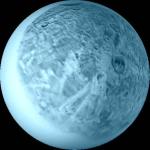 Hamlet of Oberon
Hamlet of Oberon
27.02.1999
What's in a name? Since 1919, the International Astronomical Union has been charged with the task of establishing "conventional" nomenclature for planets, satellites, and surface features. For the remote Uranian system of moons, namesakes from Shakespearean works have been chosen.
 Galileo Photographs Ganymede
Galileo Photographs Ganymede
10.07.1996
Ganymede's surface is slowly being pulled apart. This photo of Ganymede was released earlier today by the Galileo team at NASA. The Galileo Spacecraft arrived at Jupiter in December 1995. In late June...
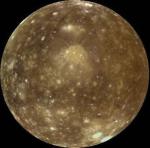 Callisto in True Color
Callisto in True Color
11.05.1998
Callisto's surface has many stories to tell. The most distant of Jupiter's Galilean Moons, Callisto shows the highest density of impact craters in the Solar System, but harbors no volcanoes or even any large mountains. Callisto's surface is laced with cracks and craters from
 A Venus Landing
A Venus Landing
27.09.1995
This image is part of the first color panoramic view from Venus. It was transmitted by a TV camera on the Soviet Venera 13 lander which parachuted to the surface on March 1, 1982.
 Hamlet of Oberon
Hamlet of Oberon
31.01.1997
What's in a name? Since 1919, the International Astronomical Union has been charged with the task of establishing "conventional" nomenclature for planets, satellites, and surface features. For the remote Uranian system of moons, namesakes from Shakespearean works have been chosen.
 Perseverance Landing Site from Mars Reconnaissance Orbiter
Perseverance Landing Site from Mars Reconnaissance Orbiter
27.02.2021
Seen from orbit a day after a dramatic arrival on the martian surface, the Perseverance landing site is identified in this high-resolution view from the Mars Reconnaissance Orbiter. The orbiter's camera image also...
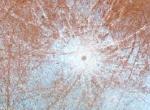 Pwyll: Icy Crater of Europa
Pwyll: Icy Crater of Europa
17.04.1997
The impact crater Pwyll (a name from Celtic Mythology) is thought to represent one of the youngest features on the surface of Jupiter's moon Europa. A combination of color and high resolution black...
18.09.2001
Just after landing on Mars in 1997, the robotic Mars Pathfinder main station took a quick first look around. This insurance panorama was taken even before the Sagan Memorial Station camera was raised to its two-meter-high perch. The full view is best seen by slowly scrolling to the right.
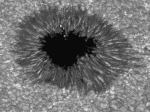 Sunspot Seething
Sunspot Seething
23.02.2000
Our Sun's surface is continually changing. This time-lapse movie shows in five seconds what happens in 20 minutes on the Sun's surface near a sunspot. Visible is boiling granulation outside the sunspot...
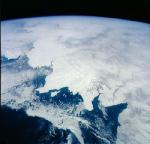 Water World
Water World
16.03.1997
Water (Dihydrogen Oxide, H2O) is a truly remarkable chemical compound, fundamental to life on Earth. Earth is the only planet in the Solar System where the surface temperature and pressure allow the three forms of water, solid (ice), liquid (ocean), and gas (water vapor condensing in clouds) to exist simultaneously on its surface.
|
January February March April May June July |
|||||||||||||||||||||||||||||||||||||||||||||||||